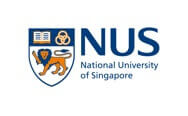Calorimetry Lab Report: Introduction to Methods
Calorimetry Lab Report - What is it
The term "calorimetry’ is associated with measuring heat. When science was predominantly a matter for philosophy paper topics, people spoke of different energies and imagined heat as a unique concept, heat energy coexisted with other substances of a system and, say, electrical or vital energy. From contemporary science, only one energy is stored in a body – the internal energy, which has a multitude of forms and reveals its appearance as kinetic, electrical, or heat energy. Therefore, the form of energy, such as heat, is conceived only as coupled with energy changes and is always associated with heat flow. One may say in a calorimetry lab report, that calorimeters are the instruments employed for the measurement of the amount of energy that exchanged within a given period in the form of heat flow.
How is Calorimetry Used Today?
Students often seek someone who can write a research paper for them because modern calorimetry has grown as a complex and sophisticated set of methods. For centuries, it was a highly effective method in natural sciences. Nowadays, an extensive base for progress in classical physical chemistry and thermodynamics exists due to the possibility of precise measurement of heat of reaction, heat capacity, the heat of combustion, the heat of fusion as well as other caloric quantities. With the progress in computer science and microelectronics, the classical approaches in calorimetry and calorimetry lab report format has been revised. Since it became possible to create and develop new fields of application and new types of calorimeters. Taking into account how many students choose to do their GCSE ICT coursework using newly-designed calorimetry methods, one could say that contemporary calorimetry experiences growing interested from different fields of science, which now are eager to employ this cheap, easy and powerful approach for various investigative purposes.
Calorimetry Lab Report Format: Usefulness of Calorimetry For Natural and Non-natural Sciences
Many fields, such as pharmacy, medicine, biology, biochemistry, and material and food science, benefit from using modern calorimetry. It enables scientists to determine the energy content of fuels and conduct safety investigations. Also one could easily find a research paper to buy related to the usage of calorimetry for food quality control. More detailed examples of successful applications are below:
Life Sciences Example
Regardless of the frictional and incidental heat, all living organisms produce heat as the result of metabolic reactions in the cells. The heat production differs significantly depending on the organism's temperature and other parameters such as nutrients, respiration, and atmospheric conditions.
Naturally, the heat production remains constant if the conditions of the environment and the organism's temperature are kept constant. Hence, according to a calorimetry lab report format, the same cells produce a characteristic amount of heat under the constant conditions.
In case this quality is precisely known for certain microbes, it is possible to track down their amounts using a microcalorimeter (detectable heat can be as low as 1-3 pW per bacterial cell). Furthermore, it has been shown in many microbiology thesis examples that bacterial heat-flow profiles are highly specific, so a microcalorimeter can help find them much faster than it could be performed with traditional inoculation on a culture medium.
Material Science Example
Technological processes that imply molding of non-amorphous polymers often leads to partial crystallization of polymers on cooling. However, crystallized polymers change their properties for the worse, and therefore, these changes should be avoided. Preventive methods are rapid cooling and heating technology. Unfortunately, the most commonly used differential scanning calorimeters have significant limitations regarding the heating and cooling rates (not less than 100 K min-1) due to the instrument's thermal inertia. Finally, that problem was overcome with chip calorimeters, which have a minimal mass as well as good thermal conductivity. The student may write in a calorimetry lab report example about the characteristics of chip calorimeters: their low time constants together with fragile and small samples (10 µm and one ng, accordingly) eliminate the problem of thermal inertia almost completely (thus, heating and cooling rates go up to 106 K s-1).
Legal Metrology Example
Many students know about fuel problems in legal metrology from textbooks with an AP Statistics homework help. Everyone knows that the commercial value of fuel depends on the amount of energy that a given portion of fuel contains. Traditionally, gas chromatography has been used to estimate the caloric value of fuels and natural gas. However, many biogases and nonconventional fuels such as shale gas and landfill gas, comprise components that are absent in natural gas. Consequently, it incomparably increases the cost of gas chromatography. Gas calorimetry succeeds in other expensive approaches as a quicker and cheaper method, which is also automatized.
On the Internet, there is a freely available calorimetry lab report describing the first scheme of gas calorimeters in detail. Firstly, two gas streams (gas fuel flow and combustion airflow) come from special nozzles and become mixed and burned. At the exit of the heat exchanger, the resulting heat is measured. The more energy comprises the fuel. The hotter is the exchanger. The density of the gas is also measured to obtain a special output of the calorimeter, the Wobbe number, which represents the calorific value of the fuel.
New Here? Get $5 OFF
Your First Project
We are a team of enthusiastic professionals and geeks in our field.
At the very start of the project
Money-Back Guarantee
Support 24/7
No Hidden Charges
Who Are the Experts?
Our experts are alumni from the world’s top universities and colleges.
All of them have successfully passed the Studybay examination and proven their competence to our team.
Our experts have graduated from the best universities in the world
Contacts
Want to contact us directly? No problem.
We are always here for you



Order an academic assignment
Enter your email address to order from this writer.
Sign Up Studybay
How it works







Already Got Help? Write Your Review
👏